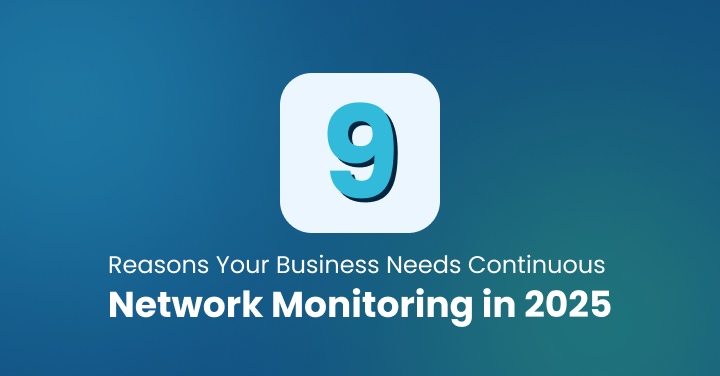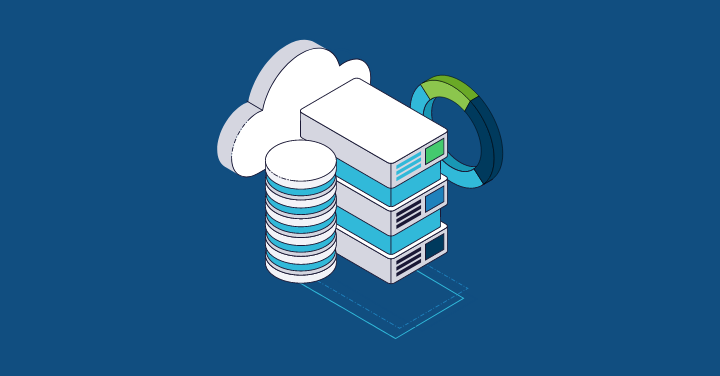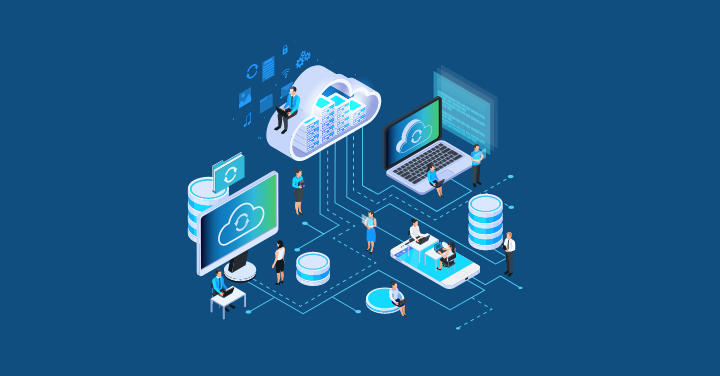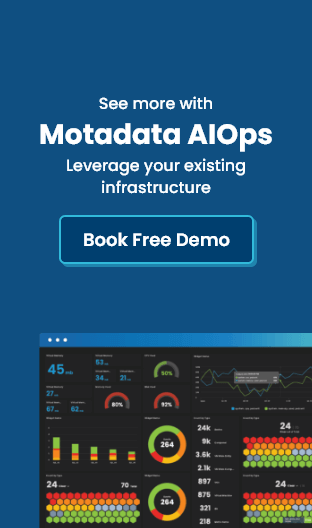Organizations from various industries are adopting cloud services for their operations, data, and applications in order to enhance the efficiency, scalability, and collaboration of the company.
This swift migration has allowed for new possibilities but at the same time created new weaknesses. Hackers are always on the lookout for cloud systems to attack since such environments are usually repositories of sensitive customer data, bank details, and valuable ideas in the form of software code or the like.
Cloud monitoring is the primary factor that has been associated with the success of security strategies.
Through constant monitoring of cloud infrastructure, applications, and networks, enterprises are allowed to discover abnormal activities, block penetrations and fulfill provision requirements.
Organizations that do not have a robust watch program in place run the risk of having blind spots, and intruders are always on the lookout for these blind spots.
Why Cloud Monitoring Is Now a Business Priority
The scenarios in the cloud are constantly changing or dynamic. While in traditional data centers, a system remains the same or is less dynamic, in the cloud environment, resources are scalable as per the user’s need.
This property of the cloud is very good for the optimization of performance and cost; however, it leads to higher complexity.
Every single virtual machine, new software, or even an addition to the existing one is an implementation of possible access points.
In the absence of real-time monitoring, companies might be oblivious to errors in configurations, illegal entries, or initiating traffic that may continue to cause destruction without the company knowing.
On top of that, laws like GDPR, HIPAA, and PCI-DSS are the criteria that organizations must meet, and part of that is showing control over cloud-stored data.
Monitoring makes sure that there is transparency regarding the treatment of data and also the person who accesses it is known.
Linking Cybersecurity with Broader Business Functions
Digital infrastructure is at the heart of modern business not only their internal operations but also their customer engagement.
A hacked cloud environment can paralyze vital services such as sales platforms, financial transactions, or customer communications.
For instance, marketing staff typically need the cheapest email marketing platforms to manage campaigns and client interactions.
In the case of cloud security being frail and these systems having been taken over by hackers, the latter can use the contiguous client data for their own nefarious purposes such as destruction of the brand, and consequently trust among customers.
Cloud monitoring elevates the security of the software that the communications are built upon, thus providing these channels with security and reliability. By safeguarding business tools that are used daily, management both supports cybersecurity and operational resilience.
Addressing the Expanding Threat Landscape
The extent of cyber threats has been raised in parallel with cloud technology implementations. Attackers employ methods of intrusions such as credential stuffing, ransomware, and supply chain exploits which are advanced tech manoeuvres to breach cloud environments.
Real-time monitoring offers a vital defense layer by:
- Uncovering abnormal activities of both traffic and user behavior
- Spotting attempts of illegal access
- Keeping an eye out for suspicious API calls or configuration changes
- Notifying security staff about the possible presence of malware or that data is being extracted
Such features usher in a new era where security is more of a preventative measure rather than a reactionary one. Rather than start the hunt for breaches after they’ve occurred, monitoring provisions make it possible for companies to discover and counteract threats before they magnify.
Cost Efficiency Through Proactive Protection
Although cybersecurity may look like a big investment, the cost of breaches is much bigger. Besides, organizations may end up facing data loss, regulatory penalties, and reputational damage, which, in turn, may have a ripple effect on businesses. Proactive monitoring, in that regard, acts as a multiplier to these risks and costs.
The concept is almost like marketing efficiency. One of the major ways businesses cut down on expenses is by opting for the cheapest email marketing platforms. The same goes for cloud monitoring as it helps to utilize resources in the most efficient way by identifying issues at the initial stage thereby preventing the depreciation of the resources of the organization and giving the organization a chance to grow securely and as far as they want.
In the end, by giving priority to prevention over recovery, organizations are actually saving money and still retain the trust of their customers and partners.
Supporting Remote Work and Hybrid Environments
The trend of remote and hybrid work models has led to an increased reliance on cloud services. The staff members are now using various devices, locations, and networks to get access to company data and applications.
This convenience, however, creates security loopholes as well. The network (Wi-Fi) in the home that is not secured, your own devices, and the different access controls are the factors that increase the attack surface area.
Cloud monitoring enables the visibility required to maintain this level of difficulty. The security teams can check the authorized ways of access, identify and report any unusual login and also provide the same standard of policies for different environments.
This is an example of how companies keep their information safe and at the same time, their employees’ flexibility is not compromised.
Enhancing Incident Response
Even with the best security measures, defenses and protection, breaches and incidents still can happen. What distinguishes resilient organizations from the ones that are weaker is their ability to detect and contain threats fast.
Cloud monitoring is a great way to speed up the process of incident response, as it provides detailed logs, real-time alerts, and automated workflows.
Security teams, in no time, can find out what was the cause of the problem, which areas were affected, and what steps to take for the situation to be remedied.
The quicker the reaction, the lower the loss will be. Moreover, this not only gives protection to the data, but also sends a very strong message to the stakeholders that the company is serious about security.
Building Trust with Customers and Partners
Trust is as valuable as money in today’s economy that is highly dependent on the internet. Customers need to be assured that their data is in safe hands, and partners require proof that shared systems are secure.
Inability to prove that good security practices are in place can result in a loss of business and reputation.
Organizations using cloud monitoring are one step ahead of others, as they give proof of their commitment to keep the most sensitive information safe from cyber intrusions.
The firms that decide to involve themselves in the process of monitoring may even transform this into their competitive market advantage.
Directly, in the case of financial institutions, healthcare providers, and other data-sensitive industries, trust is the main factor of growth. Trust mended by monitoring is what keeps the industries on the safe side, resistant to security failures.
Leveraging AI and Automation
The use of artificial intelligence and automation is becoming common in cloud monitoring tools. These developments in technology greatly contribute to the overall safety against cyberattacks, as they are able to spot even the slightest deviations from usual patterns and take necessary countermeasures instantly.
AI, for instance, could go through thousands of access requests in the blink of an eye to identify any abnormal behavior, such as a user logging in from multiple places at the same time.
Following this, the automation might start the security measures, for instance, the locking of accounts or isolating the system, without the need of manual intervention.
Pairing of AI with cloud surveillance is like having a higher -quality, rapid-fire, and more efficient security system that can keep up with cunning predators as they evolve.
Preparing for the Future of Cybersecurity
As the trend of adopting multi-cloud and hybrid environments keeps going, so will the significance of monitoring. The intricacy of dealing with multiple providers, services, and integrations makes visibility, which only thorough monitoring can provide, a necessity.
These new technologies like edge computing, IoT, and 5G will add additional layers of risk. Cloud monitoring will change with these trends by delivering new instruments for managing distributed infrastructure and securing devices at the edge.
By taking the step of monitoring today, organizations will be ready for the challenges that will come tomorrow. This forward-thinking stance will secure their survival in the changing cybersecurity landscape.
Practical Steps for Implementing Cloud Monitoring
Companies that want to improve the security of their cloud should follow these best practices:
- Establish goals for monitoring, such as compliance, threat detection, or performance optimization.
- Pick up the tools that are compatible with the existing system security and that allow the security of the different cloud environments.
- Deploy automated alarms and flows to minimize the time of reaction.
- Give understanding of monitoring data and the staff that they should be the first to react to the alerts.
- Examine ceilings of monitoring from time to time in order to boost them in line with the newest threat and business needs.
Such steps pave the way for monitoring to be well organized, efficient, and it can also align with the general business objectives.
Cloud monitoring is essential; it has been transformed into a major part of cybersecurity in a scenario where data, applications and even operations are shifting to the cloud.
Through providing real-time visibility, identifying threats, facilitating compliance and speeding the reaction, monitoring is the security that both the business and customer trust are protecting.
Cloud monitoring is the guarantee that the most sensitive systems remain secure. Organizations that make this capability a priority are not just defending themselves against present threats, but also setting themselves up for future challenges.
The cyber threat landscape will still change, however, businesses that make the decision to invest in full monitoring will be the ones to gain the most since they will be able to adjust, react, and prosper.






